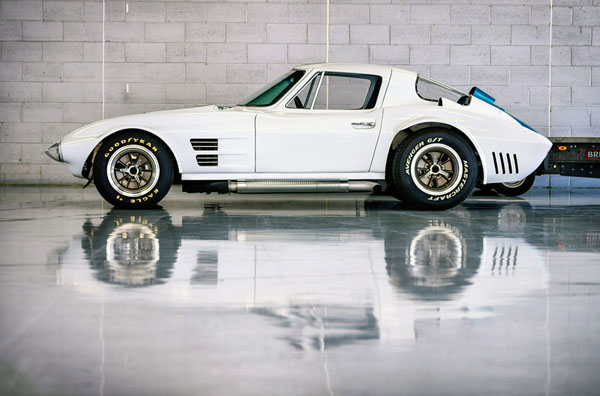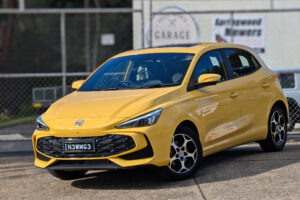
1963 Chevrolet Corvette Grand Sport
In 1957 Detroit’s Big Three agreed to honour a resolution by the US Automobile
Manufacturers Association (AMA) which was in effect a complete ban on
manufacturer’s involvement in motor sport.
Over the following years both Ford and GM failed to strictly adhere to the ruling and in
1963 Ford abandoned their agreement completely whilst GM continued at least to show
a token acceptance of it. However, when news of the Shelby Cobra became common
knowledge at least some of the GM people became anxious to give it a run for its
money.
Toward the end of 1962 the Shelby Cobra completely outclassed the GM cars at a race
meeting at Riverside and Chevrolet engineers realised the new Corvette Sting Ray
under development would be completely outclassed.
This was quite a slap in the face for Chevrolet and their engineers were determined to
respond. Fortuitously GM already had plans approved in 1962 to build a newer and far
lighter Corvette – the Grand Sport. Since FIA rules required construction of at least 100
similar cars be built and available for sale Chevrolet’s grand plan called for construction
of 125 cars, with 25 being retained for factory use, leaving 100 cars available for the
public to buy.
At this stage production on five vehicles was already underway and whilst chassis
design had been finalised and a modified version of the Stingray’s suspension chosen,
development of a new engine considered necessary to beat the Shelby Cobra had not
been commenced and had to be axed.
In its place a stock standard injected V8 engine with experimental aluminium semi-hemi
heads was substituted. GM later claimed that if they had been allowed to go ahead with
the engine development it would have created a new Corvette legend. One of the
engineers took the car to Sebring supposedly to carry out tyre tests and its appearance
caused so much press attention this was what raised the management ire and the
chairman’s cancellation memo.
The two-seater sports coupe body was made from fibreglass and so extremely thin and
light. With aerodynamics still in its infancy at that time, the racecar had a fairly high
drag factor and suffered badly from aerodynamic lift. At that time this component of
road and racecar design was not really appreciated, let alone understood.
For the first part of 1963, the Grand Sports appeared at a variety of events and its
teething problems were gradually ironed out. Later in that year the Grand Sports team
achieved its ambition. When driven by the Mecom race team, three blue Grand Sports
which went to Nassau for Speed Week finished third, fourth and fifth whilst the nearest
Cobra finished eighth. Here they had a lot of help – as it turned out almost all of
Chevrolet’s engineering staff chose to holiday that year at Nassau in the same place at
the same time!








